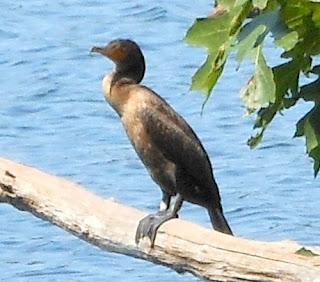Eastern White Pine (Pinus strobus) Cones
(click on the photo for a closer view)
In my corner of the world pine cones seem to be everywhere. They began falling in late summer when tropical storms brought high winds.
As Fall begins many more are ― pardon the pun ― falling, and littering woodland trails in the most wonderful way. As a friend said on a recent hike, "It's looking more and more like Pine Cone City around here."
According to folklore an abundance of pine cones portends a harsher than normal winter, something most of us in New England are rather nervous about anyway after the unusually mild winter of 2012.
Those who understand the natural cycles in pine cone production call this a mast year, when large numbers of cones (applies to nuts and berries, too) provide a greater than usual amount of seeds for wildlife. The high levels of fat and protein in a fall masting help contribute
to fat stores necessary for migration, hibernation, and survival of the
newly independent young.
Masting seed cone production also helps ensure that some seeds escape predation
for propagation.






















